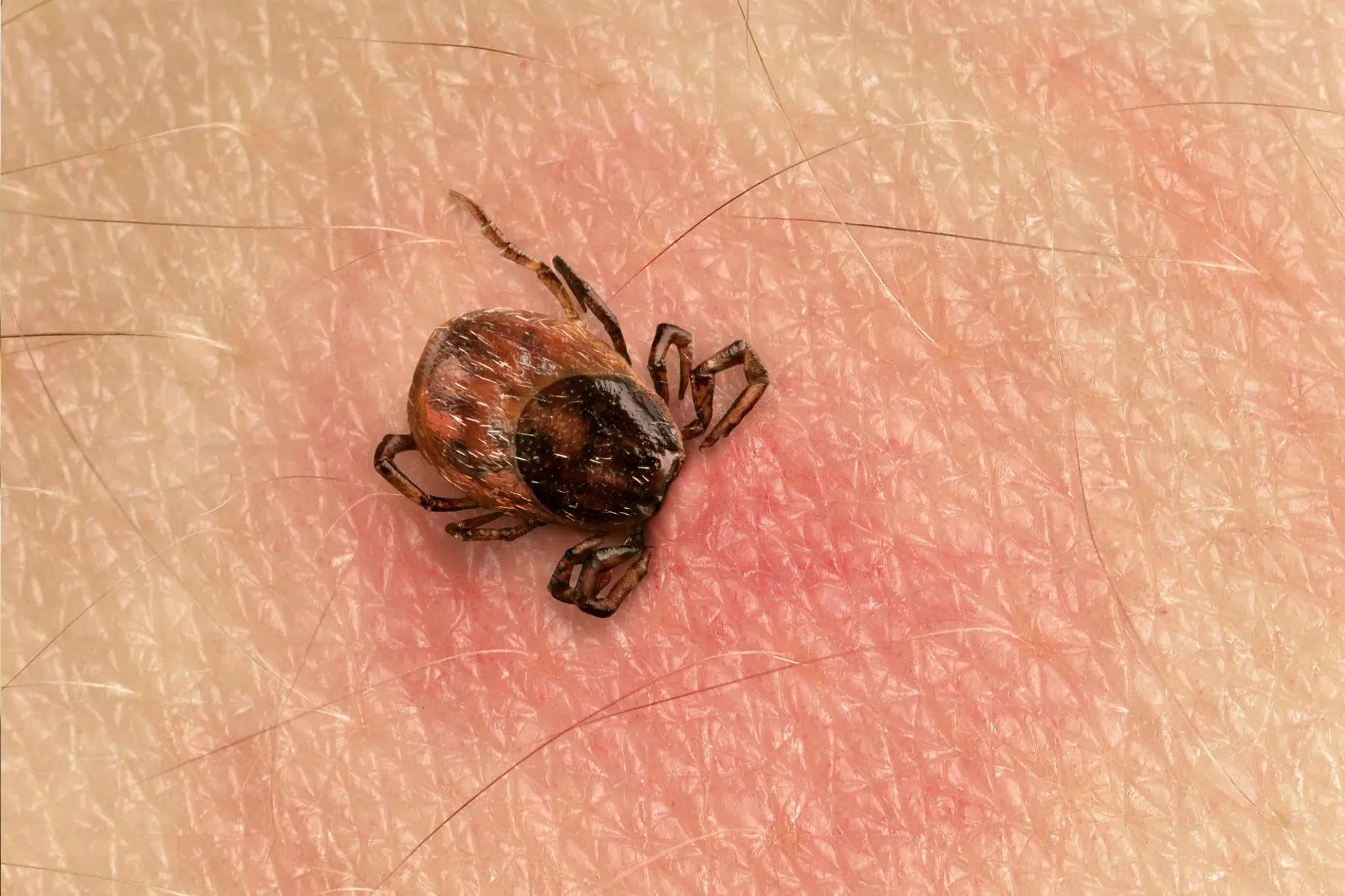
The Grey Bruce Health Unit is advising residents to take measures against tick season and avoid contracting Lyme disease.
The GBHU says as ticks have become active, if bitten by a specific tick, the blacklegged or deer tick, there could be a risk of getting the disease.
Lyme disease is a result of bacteria B. burgdoferi, which can be transmitted via tick.
GBHU Program Manager Andrew Barton says, “the likelihood of encountering a blacklegged tick in Grey-Bruce has increased over the years. The number of cases of Lyme disease in the province has also been increasing.”
In response, residents are being advised to use the free online platform eTick as a way to identify ticks, with a free mobile app also available.
“The best way to prevent Lyme disease is to avoid being bitten. Checking for ticks is also important as prompt removal reduces your risk significantly,” says Barton.
The GBHU says the National Microbiology Laboratory in Winnipeg is not offering tick testing following a bite any longer.
As an alternative, Health Quality Ontario has developed a clinical guidance document for the management of tick bites.
Early symptoms of Lyme disease include a fever, headache, muscle and joint pain, fatigue, and a bull’s-eye rash. Lyme disease can be treated effectively with antibiotics if caught early. Public health will also conduct a follow up with individuals who are diagnosed with the disease in Ontario.
The GBHU says ticks are most often found in forests, wooded areas, shrubs, tall grass and leaf piles.
To avoid getting bit by a tick, the GBHU is suggesting wearing light-coloured clothing, tucking your shirt into your pants and pants into your socks, as well as closed-toe shoes. Using bug spray with DEET or Icaridin is also a method to avoid getting bitten, as well as walking on clear paths, using a sticky roll brush to remove ticks before getting into the car, shower or bathe shortly after being outdoors, checking family members, and putting clothes into a hot dryer for several minutes to kill any ticks.
If you are bitten by a tick, be sure to remove it immediately by using clean, fine-point tweezers without crushing or damaging the tick as it could transfer Lyme disease directly into the bloodstream. The bite area should also be washed with soap and water or an alcohol-based sanitizer.
More details can be found on the GBHU website.










